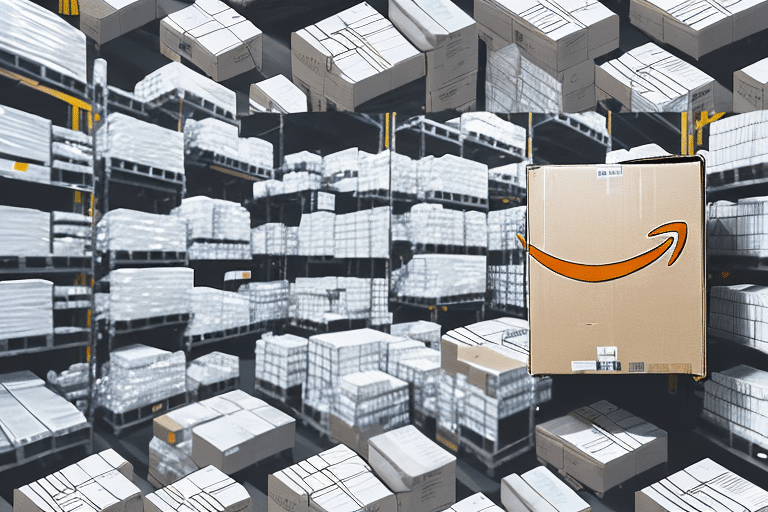Understanding Amazon FBA Seller Fees: What You Need to Know
Amazon has transformed the e-commerce landscape, offering sellers an expansive platform to reach millions of customers worldwide. One of the most popular services Amazon provides to its sellers is the Fulfilled by Amazon (FBA) program. While FBA offers numerous benefits, it also comes with a range of fees that sellers need to understand to maximize their profitability. This guide delves into the intricacies of Amazon FBA seller fees, providing you with the knowledge needed to navigate and optimize your selling strategy.
How Amazon FBA Works for Sellers
The Fulfilled by Amazon (FBA) program allows sellers to store their products in Amazon's extensive network of fulfillment centers. When a customer places an order, Amazon handles the picking, packing, shipping, and even customer service and returns on behalf of the seller. This streamlined process enables sellers to focus on other aspects of their business, such as product development and marketing.
Additionally, FBA products are eligible for Amazon Prime, granting access to millions of Prime members who prioritize products with fast, reliable shipping. This can significantly boost sales and enhance product visibility. Amazon's robust logistics and customer service further enhance the overall shopping experience, making FBA an attractive option for many sellers.
Breakdown of Amazon FBA Seller Fees
Understanding the various fees associated with Amazon FBA is crucial for accurately calculating your costs and setting competitive prices. Below is a detailed overview of the different types of fees you may encounter as an FBA seller:
1. Fulfillment Fees
Fulfillment fees are charged per unit for storage, picking, packing, and shipping your products. These fees vary based on the product's size and weight. For instance, standard-size items have lower fulfillment fees compared to oversized items. As of 2023, standard-size fulfillment fees typically start around $2.50 per unit, while oversized items can incur fees upwards of $8.26 per unit.
For the most accurate and up-to-date fulfillment fee information, refer to Amazon's official FBA Fee Schedule.
2. Storage Fees
Storage fees are based on the amount of space your inventory occupies in Amazon's warehouses. These fees are calculated per cubic foot and vary depending on the time of year. Typically, storage fees are higher during the holiday season (October to December) compared to the rest of the year.
For example, storage fees might range from $0.75 per cubic foot per month from January to September and increase to $2.40 per cubic foot per month from October to December. Products stored for over 365 days may incur Long-Term Storage Fees, which are significantly higher.
Detailed storage fee information can be found on Amazon's FBA Fee Schedule.
3. Referral Fees
Referral fees are a percentage of each sale and vary by product category. These fees typically range from 6% to 45%, with most categories falling between 8% and 15%. For example, electronics might have a referral fee of around 8%, while home and garden items could be charged up to 15%.
It's essential to review the specific referral fee percentages for your product categories in Amazon's Referral Fee Table.
4. Removal and Disposal Fees
If you need to remove or dispose of your inventory stored in Amazon's fulfillment centers, you'll incur removal fees. These fees depend on the size and weight of the items. For example, standard-size items might incur a removal fee of $0.50 per unit, while oversized items could be charged $0.60 per unit.
For more details, visit Amazon's Removal Order Fees page.
5. Closing Fees for Media Items
Media items such as books, DVDs, and video games incur a closing fee of $1.80 per item sold. This fee is specific to media products and is in addition to other FBA fees.
Refer to Amazon's Closing Fee Information for more details.
6. Subscription Fees for Professional Sellers
Amazon offers a Professional Selling Plan for sellers who plan to sell more than 40 items per month. This plan costs $39.99 per month and provides access to advanced selling tools, bulk listing options, and eligibility for the Buy Box, among other benefits.
Learn more about Amazon's Professional Selling Plan.
7. Advertising Fees
Sellers can pay for advertising to increase their product visibility on Amazon. The most common model is Cost-Per-Click (CPC), where you pay each time a customer clicks on your ad. The cost varies based on competition and product category.
To explore advertising options and costs, visit Amazon's Advertising Help page.
8. Inventory Placement Service Fees
Amazon offers an Inventory Placement Service that allows sellers to send all their inventory to a single fulfillment center, simplifying the shipping process. However, this convenience comes at a fee, which varies based on the number of units and product category.
For more information, check out Amazon's Inventory Placement Service details.
Calculating Your Amazon FBA Seller Fees
Accurately calculating your FBA fees is essential for pricing your products competitively and ensuring profitability. Here's how to approach it:
- Fulfillment Fees: Use Amazon's FBA Profitability Calculator to estimate fees based on your product's dimensions and weight.
- Storage Fees: Calculate based on the volume of your inventory (in cubic feet) and the duration of storage.
- Referral Fees: Determine based on the product category's referral percentage and your product's selling price.
- Additional Fees: Factor in any removal, disposal, closing, subscription, advertising, or inventory placement service fees as applicable.
Regularly reviewing and updating your fee calculations can help you adapt to any changes in Amazon's fee structure and maintain your profit margins.
Strategies to Minimize Amazon FBA Seller Fees
Reducing your FBA fees can significantly enhance your profitability. Here are some effective strategies:
- Optimize Inventory Management: Avoid long-term storage fees by regularly auditing your inventory and removing slow-moving items.
- Streamline Product Dimensions and Weight: Design or source products that are compact and lightweight to lower fulfillment fees.
- Increase Sales Velocity: Faster-selling products spend less time in storage, reducing storage fees and improving cash flow.
- Leverage Multi-Channel Fulfillment (MCF): Use Amazon's MCF to fulfill orders from other sales channels, consolidating your inventory and reducing overall fees.
- Participate in Amazon Programs: Enroll in programs like Subscribe and Save to potentially reduce referral fees and increase sales.
Implementing these strategies requires careful planning and continuous monitoring of your sales and inventory levels. Utilizing tools and analytics can aid in making informed decisions to minimize fees effectively.
Is Amazon FBA Right for Your Business?
Amazon FBA offers numerous advantages, including streamlined logistics, access to Prime customers, and enhanced customer service. However, the associated fees can impact your profit margins if not managed properly.
Consider the following when deciding if FBA is suitable for your business:
- Product Type: High-margin products can better absorb FBA fees compared to low-margin items.
- Sales Volume: Higher sales volumes can spread out fixed fees, making FBA more economical.
- Inventory Turnover: Products that sell quickly minimize storage fees and reduce the risk of long-term storage penalties.
- Business Scale: Larger businesses may benefit more from FBA's scalability and logistical advantages.
Ultimately, the decision to use Amazon FBA should align with your business goals, product characteristics, and financial considerations. Conduct a thorough cost-benefit analysis to determine if FBA will enhance your business operations and profitability.
Conclusion: Navigating Amazon FBA Seller Fees for Success
Amazon FBA can be a powerful tool for expanding your e-commerce business, offering unparalleled access to a vast customer base and robust logistical support. However, understanding and managing the various FBA fees is crucial to maintaining profitability.
By familiarizing yourself with the different fee structures, utilizing Amazon's tools for fee calculation, and implementing strategies to minimize costs, you can make informed decisions that enhance your business's success on Amazon.
Always stay updated with Amazon's latest fee policies and continuously evaluate your pricing and inventory strategies to adapt to any changes. With careful planning and proactive management, Amazon FBA can be a valuable asset in your e-commerce endeavors.








